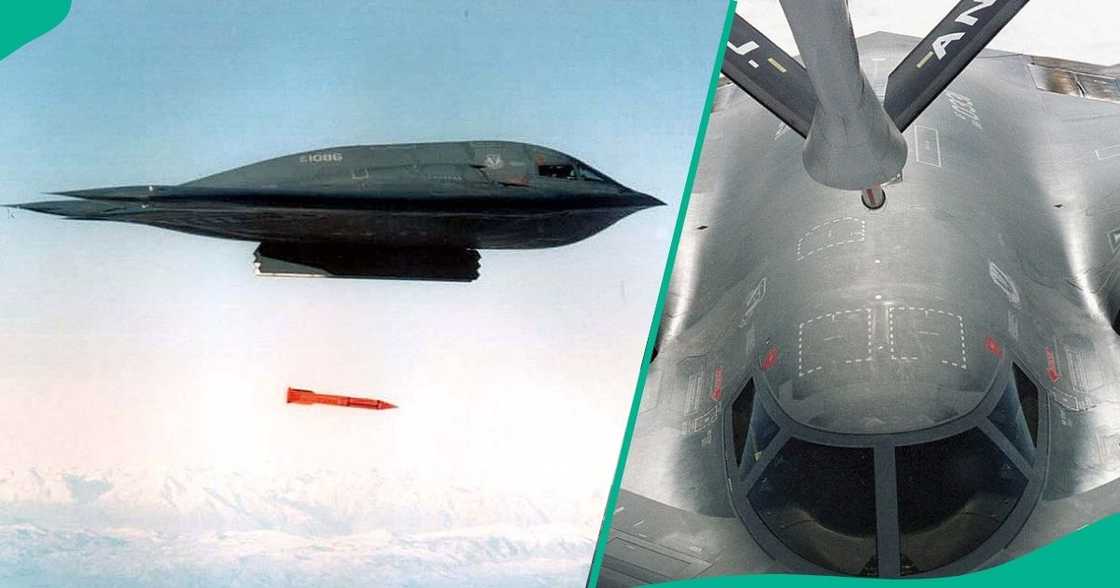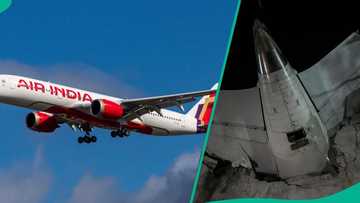How 2 Pilots of US B2 Bombers Stayed Alive in the Sky for 37hrs on Mission to Bomb Iran Nuclear Site
- US B-2 bombers flew a 37-hour round trip from Missouri to bomb Iran’s nuclear sites in a high-precision mission dubbed Operation Midnight Hammer
- With onboard microwaves, fridges, toilets, and rest areas that allowed crew members to alternate shifts, pilots endured the gruelling flight in comfort
- The mission used 14 GBU-57 bunker busters, marking the first combat deployment of the massive 15-ton bombs, with President Trump calling the strike a success
American pilots flying B-2 stealth bombers during a 37-hour round-trip mission to destroy Iranian nuclear sites were equipped with far more than just advanced avionics.
Reports have it that the B-2 bomber is equipped with microwaves, mini fridges, toilets, and even room to sleep.

Source: Getty Images
The historic bombing operation, dubbed Operation Midnight Hammer, involved seven B-2 Spirits flying from Whiteman Air Force Base near Kansas City, Missouri, to targets deep inside Iran, including Fordow, Natanz and Isfahan.
US President Donald Trump later confirmed the strikes, calling them “successful” and praising the capability of the American military.
Inside the B-2: How pilots endured the marathon flight
Flying non-stop for over a day and a half requires more than fuel and courage.
To make the marathon journey bearable, each B-2 was fitted with basic comfort facilities: a toilet, a microwave oven, and a cooler stocked with snacks.
The two-person crew also took turns sleeping, thanks to a modest space inside the cockpit that allows one pilot to lie down while the other remains on duty.
Tactical precision and mid-air coordination
During the mission, the stealth bombers flew in near-radio silence and relied on advanced automation to manage the long-haul flight, as reported by New York Times.
As they approached Iranian airspace, a formation of support and esc0rt aircraft linked up with them in what US officials described as a highly synchronised operation.
“The B-2s linked up with esc0rt and support aircraft in a complex, tightly timed manoeuvre requiring exact synchronisation across multiple platforms in a narrow piece of airspace, all done with minimal communications,” said Lt. Gen. Daniel Caine, chairman of the Joint Chiefs of Staff.
Bunker busters and precision bombing
The attack began at 6:40 p.m. ET on Saturday, June 21, when the lead B-2 dropped two GBU-57 “bunker buster” bombs on Fordow’s underground enrichment plant.
A total of 14 massive ordnance penetrators (MOPs) were dropped across multiple nuclear targets in what officials confirmed was the first-ever combat use of the 15-ton GBU-57.
President Trump, speaking on Truth Social, hailed the mission, stating:

Source: Getty Images
“There is not another military in the world that could have done this.”
First entering service in 1997, the B-2 Spirit bomber is a marvel of stealth and endurance.
With a 172-foot wingspan and a price tag of over $2 billion per aircraft, only 19 remain in the US fleet following a crash in 2008.
Iranian missile hits Israeli hospital
Earlier, Legit.ng reported that a hospital in the Israeli town of Beersheba was hit as Iran fired a barrage of missiles at the country, with the conflict between the two nations continuing.
With strikes being reported in several locations across Israel, the country's health ministry disclosed that 271 people had been injured.
Israel Katz, the country's minister of Defence, accused Iran of "war crimes of the most serious kind" and said Ayatollah Khamenei "will be held accountable for his crimes."
Source: Legit.ng





